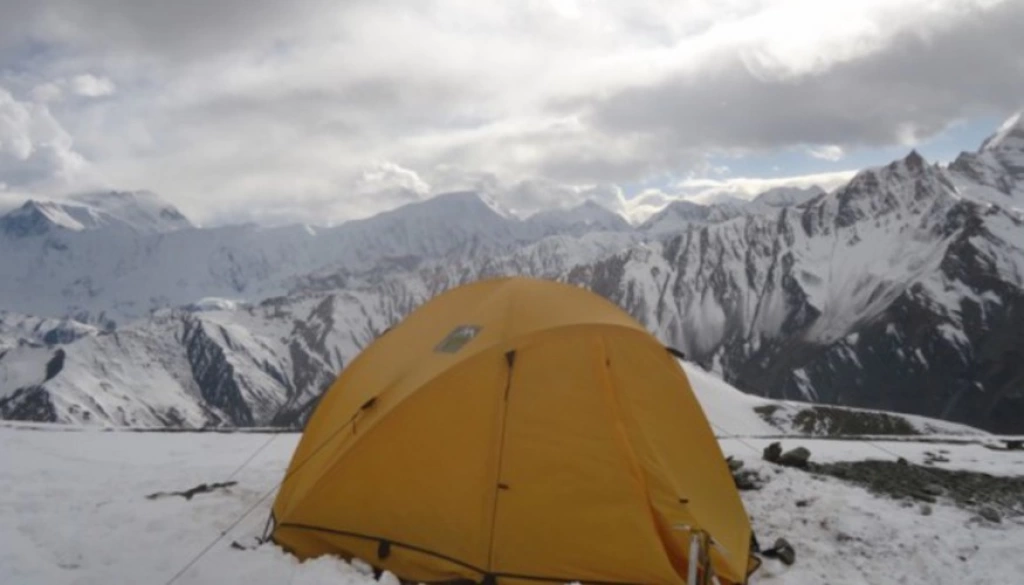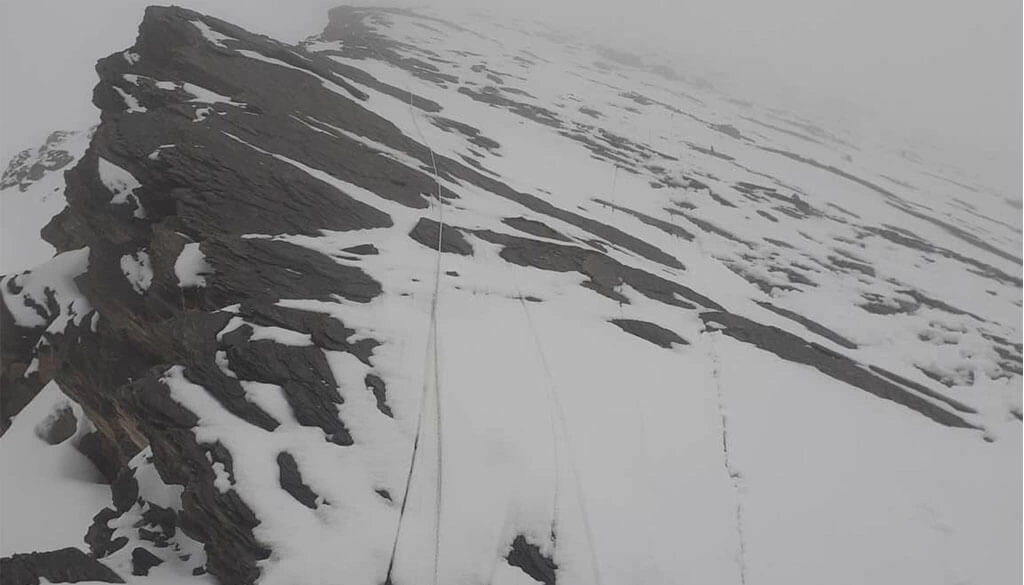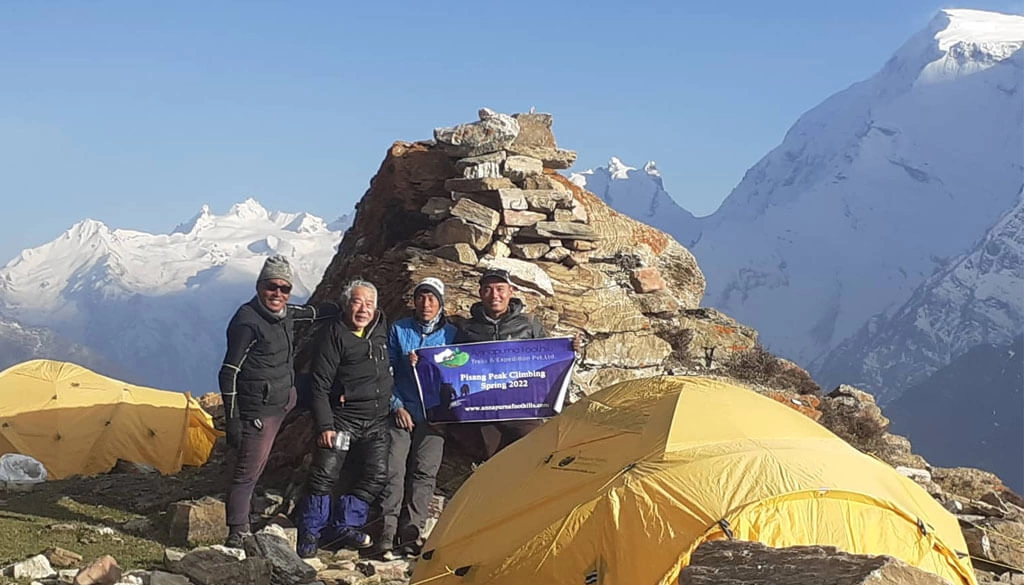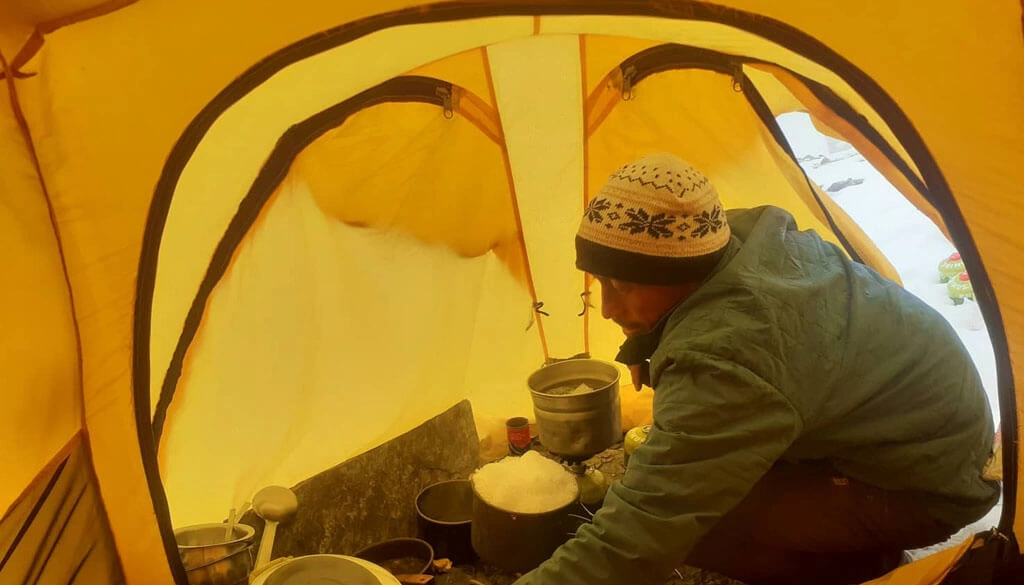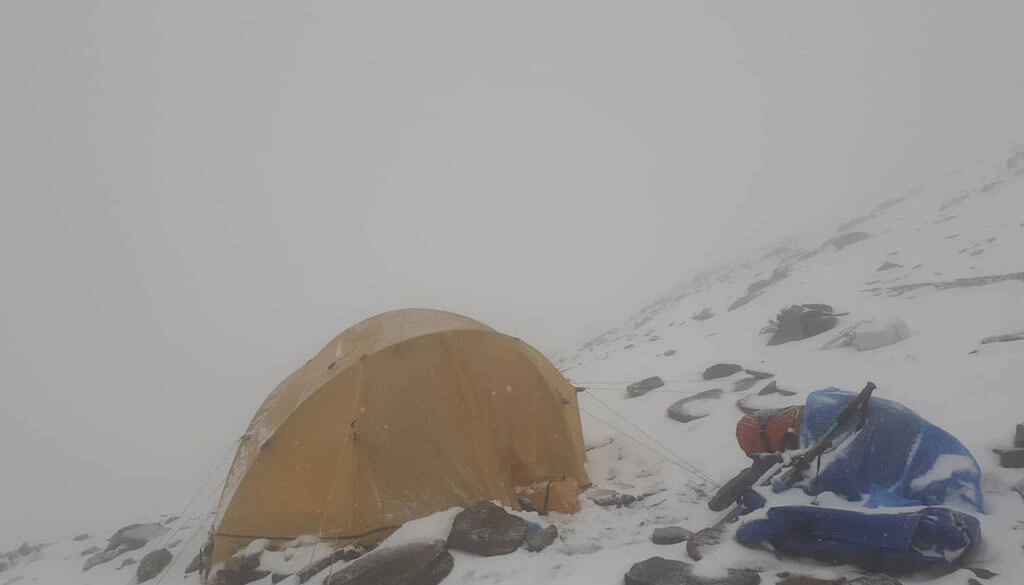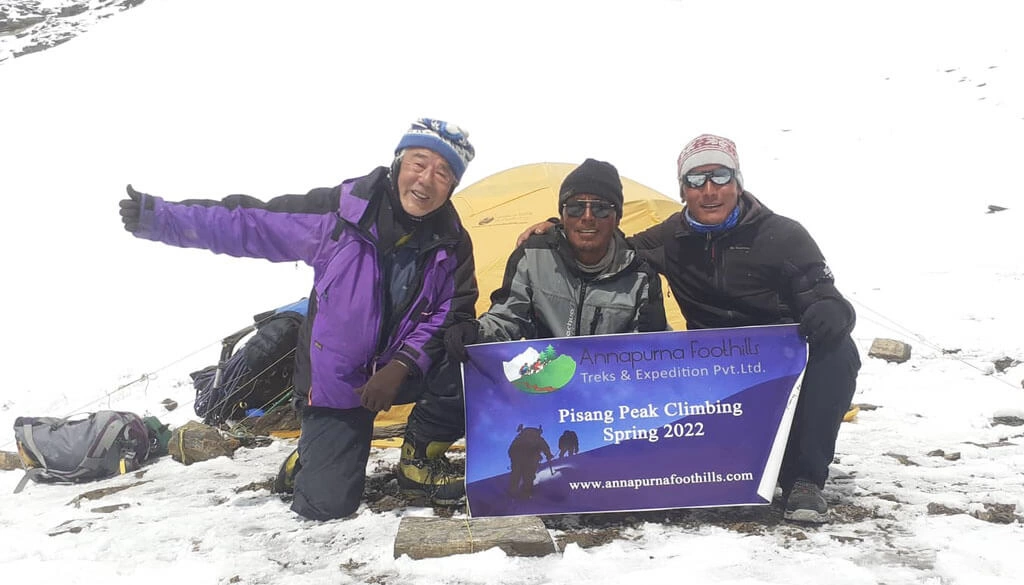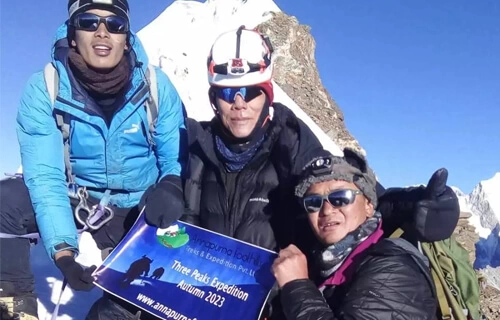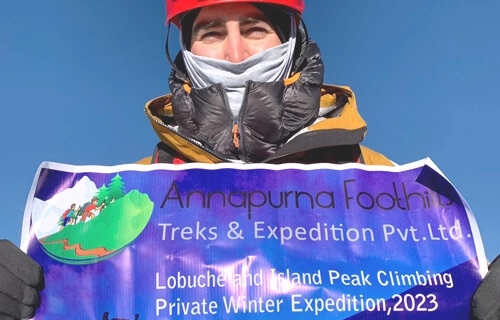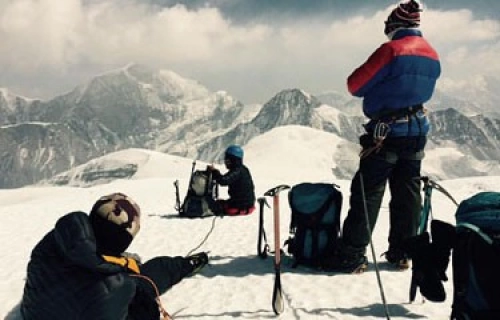About Pisang Peak Climbing
Climbing Pisang Peak will add a very exciting mountaineering element to your Annapurna Circuit Trekking. Although it is one of the lower altitude peaks in the Annapurna Region, it is one of the most technically challenging. From High Camp there is loose scree and rock, and a couple of pitches of nearly vertical, ice-snow covered rock slabs which demand at least basic expertise with fixed rope and climbing equipment.The final push to the summit is steep and fairly exposed snow slopes of 45 to 55.
Pisang Peak, 6091m, is a nearly perfect pyramid of ice and snow. From the summit there is a spectacular panorama: Himlung, 7126m and the trans-Himalayan Tibetan plateau to the north; Manaslu, 8163m and Khangaru, 6981m to the north east; Annapurna II, 7937m, and IV, 7525m, Lamjung, 6983m to the south; Gangapurna,7454m, Annapurna III, 7555m, Glacier Dome, 7069m and Tilicho Peak, 7134m to the west.
Pisang Peak Climbing follows the beautiful Annapurna Circuit Trekking Trail to the north side of the Annapurna massive where we are surrounded by peaks on all sides and branches off to the Tibetan style village of Pisang. From Pisang village, we can see Pisang Peak to the north. We set up our base camp, 4380m on the yak pasture called Kharka.The trail from base camp is rocky and the landscape increasingly barren as we approach the South-West Ridge, where we set up High Camp, 5400m. The ice, snow and lack of protection from the wind make High Camp very cold.
After climbing to the summit of Pisang Peak, we descend to Manang, on the Annapurna Circuit Trekking Trail. Manang is a culturally interesting village, but after Pisang Peak, perhaps its bakery and comfortable guesthouse hold the most appeal. From Manang, its a two day trek through juniper forests and yak pastures to Thorung Phedi, 4550m, from where we make the ascent to Thorong La Pass, 5416m. The trail descends into the Kali Gandaki Valley to Muktinath, a famous pilgrimage destination for Hindus and Buddhists. A short trek from Muktinath takes you down to Jomsom, from where you will get a flight to Pokhara.
The best season for Pisang Peak Climbing is from March to May (Spring) and from September to November (Autumn). However, the winter is also a great time to climb if you are well prepared for the cold weather. In the crisp and cold month of December the views of the mountains are crystal clear and there are fewer tourists around. The duration of the trip can be lengthened or shortened according to your preference. Annapurna Foothills Treks and Expedition will arrange every details of your Pisang Peak Expedition; lodge accommodation, guides, food, as well as all the necessary climbing and camping equipment.
Planning to climb Pisang Peak in 2025 and 2026?
Guaranteed Departure.. Please get in touch for further details.
